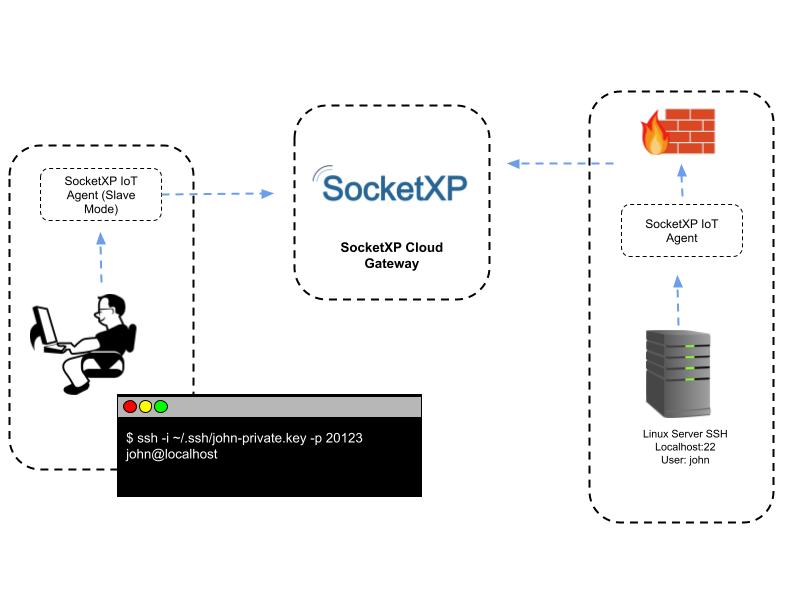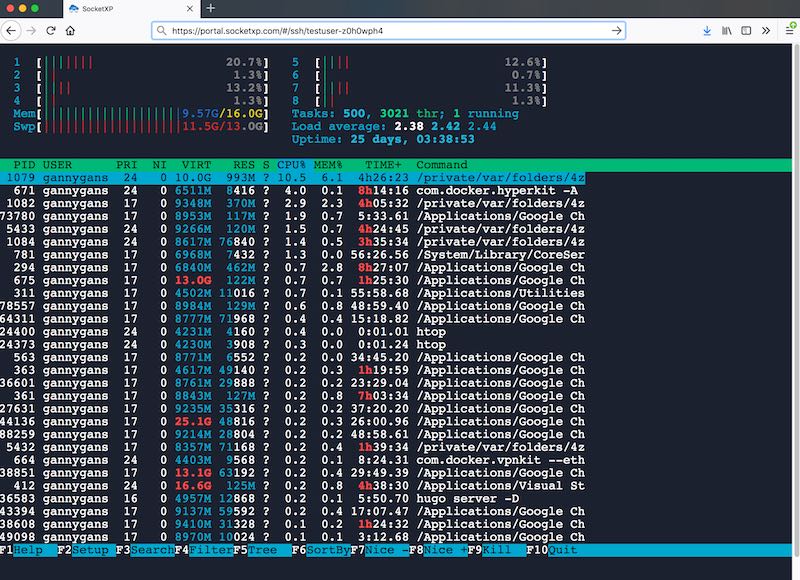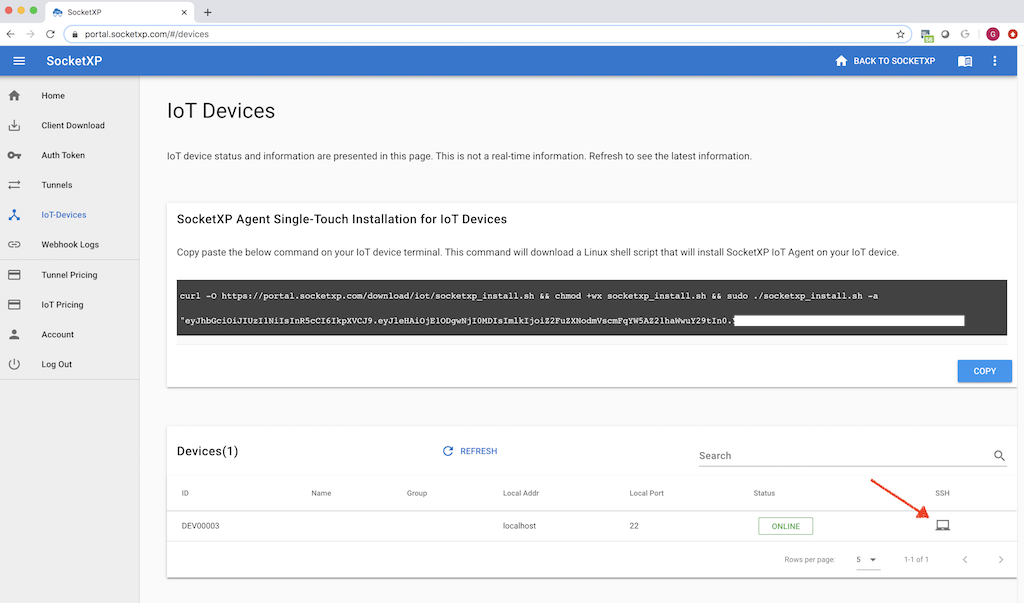IoT Remote Access SSH Example Ubuntu: A Comprehensive Guide
In the rapidly evolving world of Internet of Things (IoT), remote access plays a crucial role in managing devices and systems. IoT remote access SSH example Ubuntu is a powerful solution for securely connecting to your IoT devices from anywhere. This article will explore the process of setting up SSH on Ubuntu for IoT remote access, providing practical examples and best practices to ensure a secure and efficient setup.
As IoT devices become increasingly integrated into our daily lives, ensuring secure and reliable remote access is essential. Whether you're managing a home automation system or overseeing industrial IoT deployments, SSH (Secure Shell) offers an encrypted way to connect and manage these devices remotely.
This guide will walk you through every step of configuring SSH on Ubuntu for IoT remote access. By the end of this article, you'll have a solid understanding of how to implement SSH securely and effectively, along with practical examples tailored for Ubuntu users.
Read also:Hdhub4ufi The Ultimate Guide To Stream And Download Highquality Movies
Table of Contents
- Introduction to SSH
- Why Use SSH for IoT?
- Setting Up SSH on Ubuntu
- Securing Your SSH Connection
- IoT Remote Access SSH Example
- Troubleshooting Common SSH Issues
- Best Practices for SSH
- SSH Alternatives for IoT
- Frequently Asked Questions
- Conclusion
Introduction to SSH
Secure Shell (SSH) is a cryptographic network protocol designed to provide secure access to remote systems. It is widely used for managing servers, routers, and IoT devices. SSH ensures that data transmitted between devices is encrypted, making it difficult for unauthorized parties to intercept or tamper with communications.
Key Features of SSH:
- Encryption: Protects data in transit from being intercepted.
- Authentication: Ensures only authorized users can access the system.
- Integrity: Verifies that the data has not been altered during transmission.
SSH in IoT Ecosystem
In the context of IoT, SSH serves as a secure communication channel between IoT devices and remote management systems. It allows administrators to configure, monitor, and troubleshoot IoT devices without physical access.
Why Use SSH for IoT?
IoT remote access SSH example Ubuntu demonstrates the importance of secure communication in IoT deployments. Using SSH for IoT offers several advantages:
- Security: SSH encrypts all communication, reducing the risk of data breaches.
- Reliability: SSH connections are robust and can handle unstable network conditions.
- Flexibility: SSH supports a wide range of commands and tools, making it versatile for various IoT applications.
Setting Up SSH on Ubuntu
Configuring SSH on Ubuntu is a straightforward process. Below is a step-by-step guide to help you set up SSH for IoT remote access:
Step 1: Install SSH Server
Begin by installing the SSH server on your Ubuntu system. Open a terminal and run the following command:
Read also:Rulz Kannada 2024 A Comprehensive Guide To The Upcoming Blockbuster
sudo apt update
sudo apt install openssh-server
Step 2: Verify SSH Service
Once the installation is complete, verify that the SSH service is running:
sudo systemctl status ssh
Step 3: Configure SSH Settings
Edit the SSH configuration file to customize your settings:
sudo nano /etc/ssh/sshd_config
Some important configurations include:
- Changing the default port (e.g., from 22 to a custom port).
- Disabling root login to enhance security.
Securing Your SSH Connection
Security is paramount when setting up IoT remote access SSH example Ubuntu. Here are some best practices to secure your SSH connection:
1. Use Strong Passwords
Ensure that all user accounts have strong, unique passwords. Avoid using common words or easily guessable combinations.
2. Enable Public Key Authentication
Public key authentication adds an extra layer of security by requiring a key pair for access. Generate a key pair using the following command:
ssh-keygen -t rsa -b 4096
Copy the public key to your remote server:
ssh-copy-id user@remote_host
3. Disable Password Authentication
Once public key authentication is set up, disable password authentication in the SSH configuration file:
PasswordAuthentication no
IoT Remote Access SSH Example
Let's walk through a practical example of using SSH for IoT remote access on Ubuntu. Suppose you have an IoT device running Ubuntu and want to manage it remotely.
Example Scenario
1. Install SSH server on the IoT device as described earlier.
2. Use an SSH client on your local machine to connect to the IoT device:
ssh username@iot_device_ip
3. Once connected, you can execute commands to configure and monitor the device.
Useful Commands
sudo apt update: Update package lists.sudo apt upgrade: Upgrade installed packages.sudo systemctl restart ssh: Restart the SSH service.
Troubleshooting Common SSH Issues
Even with careful setup, issues can arise when using SSH for IoT remote access. Below are some common problems and their solutions:
1. Connection Refused
This error typically occurs when the SSH service is not running or the port is blocked. Check the SSH service status and ensure that the firewall allows the required port.
2. Permission Denied
If you encounter "permission denied" errors, verify that the user has the correct permissions and that public key authentication is properly configured.
Best Practices for SSH
To ensure a secure and efficient SSH setup, follow these best practices:
- Regularly update your Ubuntu system to patch security vulnerabilities.
- Limit SSH access to trusted IP addresses using firewall rules.
- Monitor SSH logs for suspicious activities.
SSH Alternatives for IoT
While SSH is a popular choice for IoT remote access, other protocols and tools can also be used depending on your requirements:
1. MQTT
MQTT is a lightweight messaging protocol ideal for IoT devices with limited resources. It is often used for data communication rather than remote access.
2. WebSockets
WebSockets provide real-time communication between devices and are suitable for applications requiring low latency.
Frequently Asked Questions
Q1: Is SSH the only option for IoT remote access?
No, there are alternatives like MQTT and WebSockets, but SSH offers a secure and reliable solution for managing IoT devices.
Q2: Can SSH be used with non-Linux IoT devices?
Yes, SSH clients and servers are available for various operating systems, including Windows and macOS.
Conclusion
IoT remote access SSH example Ubuntu provides a secure and efficient way to manage IoT devices remotely. By following the steps outlined in this guide, you can set up SSH on your Ubuntu system and ensure a robust connection. Remember to implement best practices and regularly update your system to maintain security.
We encourage you to share this article with others who may find it useful. For further reading, explore our other articles on IoT and cybersecurity. Don't forget to leave a comment below with your thoughts or questions!
Article Recommendations


